Q
how to set clock on proton persona
To set the clock in your Proton Persona, start by turning on the ignition and making sure the infotainment system is powered up. Next, look for the "Clock" or "Time" button on your dashboard or stereo panel – give that button a long press until the time digits start flashing. Once they're blinking, use the "+" and "-" buttons to adjust the hour and minute. Some models might use a dial or the steering wheel controls instead, so don't panic if yours looks a bit different. When you're done, either press and hold the confirm button again or just wait a few seconds – it should save automatically.
Heads-up though: the exact steps can vary a bit between model years. Pre-2016 Personas typically have physical buttons, while newer ones might tuck the clock setting into the touchscreen menu. If you've got a more complex media system, your owner's manual is your best friend – flip to the "Time Setting" section for the full lowdown.
Also, keep in mind that a lot of modern cars sync time automatically via GPS or your phone. If your clock keeps acting up, it might be because the battery died and reset everything – a quick manual adjustment should fix that. Getting the hang of little things like this isn't just about keeping the time right; it helps you bond with your car, too. Proton, being Malaysia's homegrown brand, designs stuff with local drivers in mind, so the controls are usually pretty straightforward. If you ever hit a snag, just swing by a Proton authorized service center – they'll sort you out.
Special Disclaimer: This content is published by users and does not represent the views or position of PCauto.
Related Q&A
Q
What is the fuel consumption of Persona 2019?
The fuel economy of the 2019 Proton Persona varies depending on driving conditions and transmission type. Official figures show that the 1.6L naturally aspirated engine paired with the CVT gearbox returns around 7.5L/100km in the city, drops to 5.8L/100km on the highway, and averages about 6.6L/100km combined – pretty efficient for a B-segment sedan. Real-world consumption can fluctuate based on driving habits, road conditions, and vehicle maintenance. Keeping tire pressure and engine condition in check through regular servicing helps optimize fuel efficiency. The Persona's Eco Drive assist system also gives dashboard prompts to help drivers develop fuel-saving habits. For even better mileage, avoid aggressive acceleration and maintain a steady speed. In Malaysia's hot weather, using the air conditioning appropriately will increase fuel use but is a necessary expense. It's also worth checking fuel economy numbers for rivals like the Honda City or Toyota Vios to make a well-rounded comparison when car shopping.
Q
What transmission is in the Proton Persona 2019?
The 2019 Proton Persona comes with a CVT gearbox built by Punch, model VT3. This transmission is known for its smooth shifting and fuel efficiency, making it perfect for city driving. Proton has done some local tuning on it to better suit Malaysian road conditions and driving styles. CVT tech delivers a more linear power delivery by using stepless gear changes, cutting down on the power interruptions you get with conventional autos and boosting overall drive comfort. You'll also find this same gearbox in other Proton models like the Iriz, showing the brand's strategy for powertrain commonality. For Malaysian buyers, the CVT's low maintenance costs and reliability make it a practical pick for daily use. Proton even backs the Persona's gearbox with a 5-year or 150,000 km warranty, which really helps build customer confidence. If you're after a more engaging drive, there's a 5-speed manual version too, but the CVT is still the top seller—especially handy in those stop-and-go city jams.
Q
What is the spec of the Proton Persona 2019?
The 2019 Proton Persona is a B-segment sedan that emphasizes practicality and value for money. It comes with a 1.6L naturally aspirated engine paired with either a 5-speed manual or CVT transmission, delivering a maximum output of 107 horsepower and a peak torque of 150 Nm. Fuel economy is decent, with around 7.5L/100km in urban driving. Measuring 4,383mm × 1,722mm × 1,554mm with a 2,555mm wheelbase, it offers reasonable rear legroom and a 436-liter trunk. Standard features include LED daytime running lights, a touchscreen infotainment system (with Bluetooth and USB connectivity), a reverse camera, and dual airbags (upgraded to six in higher trims). The Executive CVT variant adds extras like automatic air conditioning, leather seats, and Electronic Stability Control (ESC). Notably, the 2019 Persona borrows chassis tuning tech from the X70 platform, enhancing ride stability—handy for Malaysia's twisty roads. Local production also ensures easy access to parts and after-sales service, making it a solid pick for budget-conscious buyers seeking a reliable family car.
Q
What is the engine of Proton Persona 2023?
The 2023 Proton Persona is powered by a 1.6-liter naturally aspirated four-cylinder engine, codenamed 4AT. It cranks out 107 horsepower (80 kilowatts) and a peak torque of 150 Newton-meters, paired with a CVT automatic transmission that delivers smooth driving and decent fuel economy. This engine features dual overhead camshafts (DOHC) and a variable valve timing system (VVT), which optimize power delivery and fuel efficiency—perfect for city commuting and daily drives. As a top-selling model from Malaysia's homegrown brand, the Persona's engine is built with reliability and practicality in mind, tailored to local drivers' needs. While naturally aspirated engines might not match turbos in raw power, they shine with lower maintenance costs, making them a solid pick for budget-conscious buyers. In the Malaysian market, the Persona's engine setup offers strong value for the money compared to rivals in its price bracket, easily handling most families' driving requirements.
Q
What is the fuel consumption of Persona 2023?
The 2023 Proton Persona's fuel efficiency, according to official figures, comes in at around 6.0 liters per 100 kilometers on the combined cycle for models powered by the 1.6-liter naturally aspirated engine. Of course, real-world numbers can vary a bit depending on how you drive, the roads you take, and the specific specs of the car – generally, the manual transmission version tends to sip a little less fuel than the CVT-equipped one. As a popular sedan from Malaysia's homegrown brand, the Persona offers solid, well-rounded fuel economy for its class, making it a solid pick for daily city commutes and family use. It's worth keeping in mind that fuel efficiency isn't just about engine tech, though. Things like tire pressure, how often you blast the AC, and regular maintenance all play a big role too. So, if you want to get the best out of your Persona at the pumps, keeping up with good driving habits and sticking to scheduled servicing is key. And if fuel economy is a top priority for you, checking out Malaysia's Energy Efficiency Vehicle (EEV) certification is a smart move – it helps you quickly compare how efficient different models really are.
Q
What is the new Persona game 2023?
Regarding the question "What is the new Persona game 2023?", it's crucial to clarify first that "Persona" isn't a car - related product. Instead, it's the English name for the well - known video game series Persona. In 2023, the series released new titles like Persona 5 Tactica.
If you're looking for new car info in the Malaysian market, though, 2023 saw popular local models like the updated Proton Persona (not the game). This B - segment sedan gained popularity for its strong value - for - money and localized design, equipped with a 1.6L engine and upgraded safety features such as the ASA 3.0 system.
For car enthusiasts, Malaysia's market has recently focused on developing Energy Efficient Vehicles (EEVs), with models like the Perodua Myvi and Proton X50 offering hybrid options or small - displacement engines. The government has also rolled out tax exemption policies to encourage eco - friendly car purchases. We recommend keeping an eye on industry updates from the Malaysian Automotive Institute (MAI) or checking Proton and Perodua's official websites for new car test drive opportunities.
Q
What Segment is Proton Persona?
The Proton Persona belongs to the B-Segment category. B-Segment usually includes some compact-sized family sedans suitable for daily urban commuting. These types of vehicles generally have a moderate length and width, which makes it easy for them to maneuver through congested city traffic and park relatively easily. The Proton Persona has a length of 4366mm, a width of 1722mm, and a wheelbase of 2555mm. Such dimensional design conforms to the characteristics of B-Segment models. In Malaysia, there is a large market demand for B-Segment vehicles because they are economical and practical, meeting the travel needs of most families. Relying on the features of this segment of models, the Proton Persona holds a certain share in the Malaysian family sedan market, offering consumers an affordable and practical travel option.
Q
What is the Reslae Value of Proton Persona?
As a best - selling model of a Malaysian local brand, the Proton Persona shows a stable used - car resale value in the B - class sedan market. Depending on the vehicle age, condition, and configuration, the residual value of a 3 - year - old Proton Persona usually stays around 50% - 60%, while that of a 5 - year - old one is about 40%. This is closely related to its reliable powertrain (such as the 1.6L CamPro engine paired with a CVT gearbox), low maintenance costs, and extensive original - factory service network.
The key factors affecting its resale value include regular original - factory maintenance records, accident - free vehicle conditions, and popular configurations (such as HLA hill - start assist and a 7 - inch touchscreen). Moreover, the high market share also ensures good liquidity.
It's worth noting that Proton models have always been known for their cost - effectiveness. The demand for the Persona in the used - car market is mainly focused on the post - 2019 facelift versions, as they have optimized sound insulation and suspension comfort.
Q
How Many CC is Proton Persona?
The Proton Persona has a displacement of 1597 cc. CC (Cubic Centimeter) is equivalent to a cubic centimeter and is the same as a milliliter (mL). In the automotive field, it is used to represent the engine's displacement. All models of the Proton Persona are equipped with a 1.6 - liter displacement engine. The intake form is natural aspiration (NA), and the cylinder arrangement is an in - line 4 - cylinder. The engine's maximum horsepower is 109 PS, the maximum power is 80 kW, the maximum power speed is 5750 rpm, the maximum torque is 150 N·m, and the maximum torque speed is 4000 rpm. Such a power configuration can meet the needs of daily urban commuting and general road driving. Different versions of the models vary in terms of configuration, comfort, etc., but the core engine displacement remains the same.
Q
What is the Engine in Proton Persona?
Currently, the Proton Persona is equipped with a 1.6-liter naturally aspirated four-cylinder gasoline engine, codenamed CamPro IAFM+. This engine is independently developed by Proton. It has a maximum output power of 107 horsepower (about 80 kilowatts) and a torque of 150 Newton-meters. It is paired with either a 5-speed manual transmission or a CVT continuously variable transmission. The overall performance is smooth, and its fuel economy is suitable for daily driving.
The CamPro series of engines is one of Proton's signature technologies. The IAFM+ (Intelligent Air-Fuel Module with Variable Length Intake Manifold) technology enhances the low-speed torque performance by optimizing the intake efficiency, which meets the driving needs of the multi-urban road conditions in Malaysia. It's worth mentioning that since Proton collaborated with Geely in recent years, some new models have started to adopt turbocharging technology. However, as an economy car, the Persona still continues with the mature and stable naturally aspirated configuration. This setup is more attractive to local consumers in terms of maintenance cost and reliability.
If you have higher requirements for power, you can pay attention to Proton's models equipped with the 1.5TGDI turbocharged engine. Nevertheless, the Persona is more positioned towards practicality and cost-effectiveness, making it suitable for family users who focus on daily commuting.
Popular Cars
Model Year
Car Compare
Car Photo
Latest Q&A
Q
How much did a new 2018 beetle cost?
The 2018 Volkswagen Beetle had a starting price range of approximately RM120,000 to RM180,000, depending on the trim and options. The entry-level 1.2 TSI Design model was the most affordable, while the top-spec 2.0 TSI R-Line version approached RM180,000—though final pricing could vary with optional extras and dealer promotions.
As a timeless classic, the 2018 Beetle kept its retro charm but packed modern tech like a touchscreen infotainment system and active safety features. Under the hood, buyers could choose between the fuel-efficient 1.2T or the more spirited 2.0T engine.
Fair warning: Volkswagen discontinued the Beetle in 2019, so you’ll only find it on the used market now. That said, its iconic design and nostalgic appeal still make it a hit among collectors. If you’re eyeing a pre-owned model, always check the vehicle history and maintenance records to snag a solid deal.
Q
What engine does a 2018 VW Beetle have?
The 2018 Volkswagen Beetle offered two gasoline engine options across different markets. The primary powerplant was a 1.2-liter TSI turbocharged inline-four, delivering 105 horsepower and 175 Nm of torque, paired with a 7-speed DSG dual-clutch transmission. This compact forced-induction engine struck a balance between urban fuel efficiency and strong low-end torque.
Higher-spec variants featured an optional 1.4-liter TSI turbocharged unit, bumping output to 150 horsepower. Both engines adopted direct fuel injection and belonged to VW’s widely used EA211 modular family, featuring modern tech like lightweight aluminum blocks.
Though retaining its iconic silhouette, this generation Beetle actually shared its underpinnings with the Golf, inheriting the brand’s proven front-wheel-drive architecture. This platform commonality also translated to easier maintenance, as local dealerships were well-versed in servicing these powertrains thanks to extensive parts sharing across VW’s lineup.
Q
What are the different models of the 2018 VW Beetle?
The 2018 Volkswagen Beetle comes in three main trims: Classic, Trendline, and Sport. All models are powered by a 1.2-liter TSI turbocharged engine delivering 105 horsepower, paired with a 7-speed DSG dual-clutch transmission—perfect for city driving with its nimble handling and solid fuel efficiency.
The entry-level Classic trim rolls on 16-inch wheels and features a basic multimedia system. Stepping up to the Trendline adds 17-inch wheels, fog lights, and chrome accents. The Sport trim leans into its name with 18-inch wheels, a sport-tuned suspension, and unique interior color options.
This generation keeps the Beetle’s iconic retro curves but modernizes them with touches like LED daytime running lights. Inside, you’ll find color-matched dash panels, and with 310 liters of trunk space, it’s more practical than most small cars in its class.
Since the Beetline was discontinued in 2019, the 2018 model stands as the last new generation, making it a rising collector’s item—especially the convertible, which holds strong appeal in the used market. For maintenance, stick to routine service every 15,000 km or 12 months, and regular 95-octane fuel is all it needs.
Q
Does the 2018 Beetle have Apple CarPlay?
The 2018 Volkswagen Beetle did come equipped with Apple CarPlay, integrated into its Composition Media infotainment system. This allowed iPhone users to seamlessly connect for navigation, music, and other apps. The system also supported Android Auto, catering to different smartphone users with its intuitive and responsive interface—definitely a plus for convenience on the road.
That said, some early-production 2018 models might require a software update to activate the feature, so it’s worth checking with an official dealer to confirm your car’s specs or available upgrades. Also, wireless Apple CarPlay wasn’t standard across all trims; it depended on the factory-installed options.
For fans of classic styling who still want modern tech, the Beetle struck a nice balance between retro charm and everyday usability. Competitors like the Mini Cooper offered similar connectivity, but let’s be honest—the Beetle’s iconic design was always its standout feature.
Q
What is the fuel economy of the 2018 Beetle?
The 2018 Volkswagen Beetle's fuel efficiency varies by powertrain. The 1.2L TSI turbocharged version delivers a combined fuel consumption of around 5.5L/100km, while the 1.4L TSI model is slightly thirstier at approximately 6.0L/100km – both perform best with 95-octane petrol.
You'll likely see higher consumption in city driving, but it cruises efficiently on highways thanks to its classic aerodynamic design. For better mileage, stick to routine maintenance like cleaning the air filter and keeping tyres properly inflated. These small habits can help squeeze out extra kilometres per litre.
Though discontinued, the 2018 Beetle remains popular in the used car market – its iconic styling and decent fuel economy make it a practical daily driver. Just remember real-world figures depend heavily on driving style and road conditions, so check owner forums for real-life feedback.
View MoreRelated News

Proton Persona will be discontinued in 2026, with total sales exceeding 450,000 units
RobertDec 10, 2025
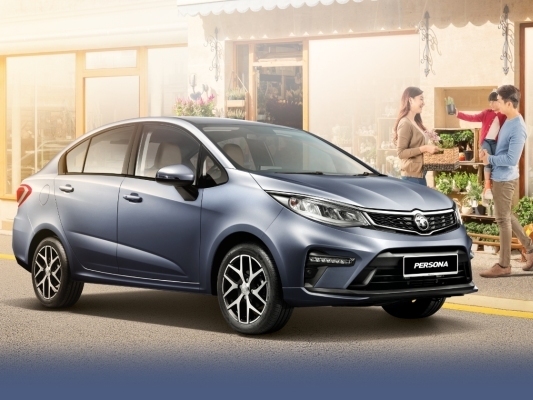
Proton Persona Interior Design Revealed: A High-Value B-Segment Sedan Interior Analysis
MichaelJul 21, 2025
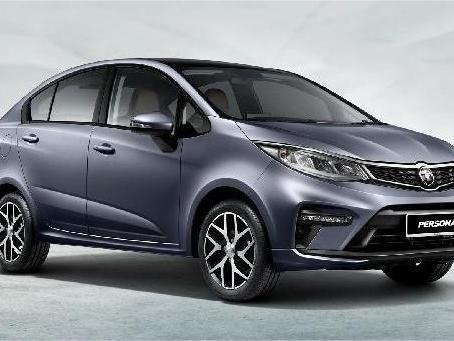
Proton Persona Review: Fuel-Efficient, Spacious City Sedan
JamesApr 8, 2025
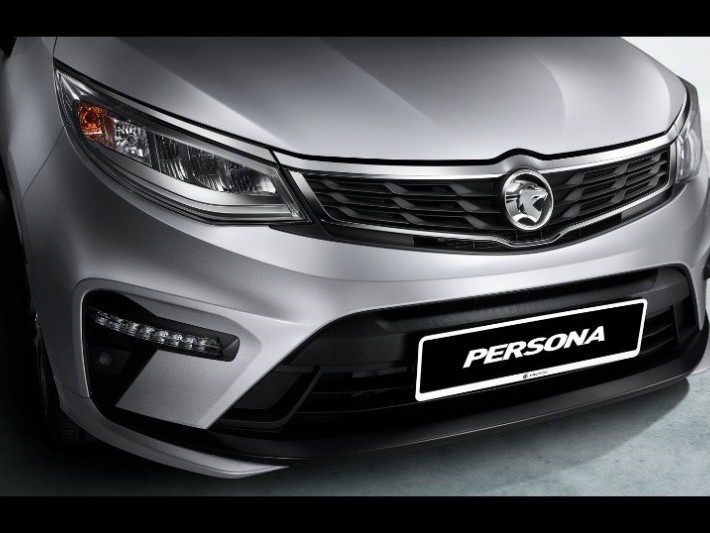
Considering buying a Proton Persona? Don't miss this fuel consumption guide!
LienOct 17, 2024
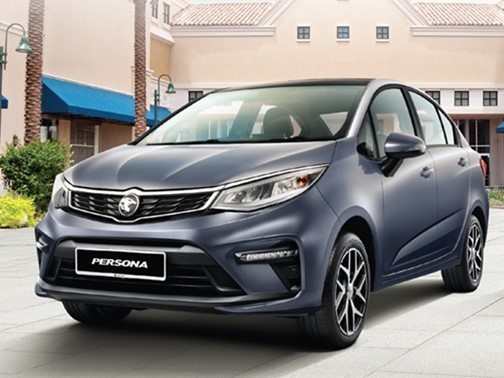
Proton Persona Buying Guide: Price, Configuration, How to Choose Between mid and high end models?
JamesOct 16, 2024
View More












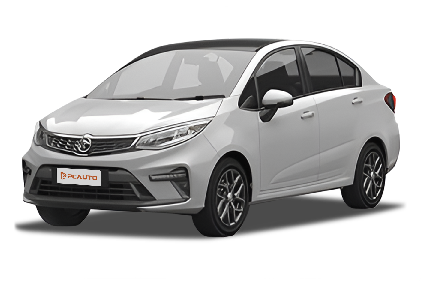





Pros
Cons